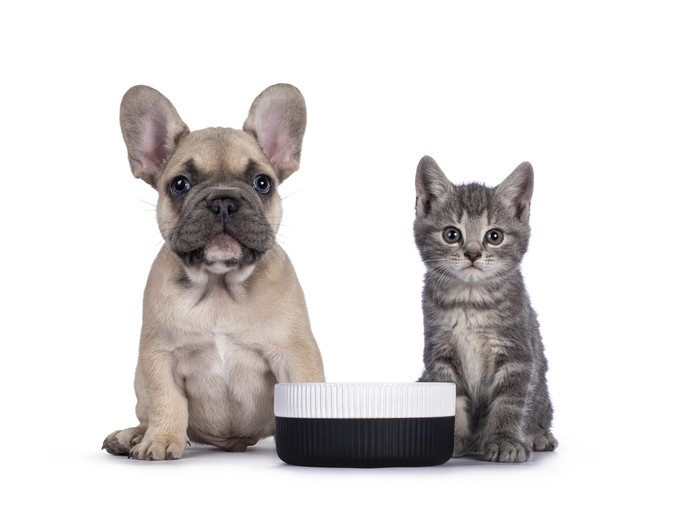Companion animal market
US pet food suppliers poised for further expansion in China

According to China Customs data, China imported 17,595 metric tons (MT) of US pet food - dog and cat food for retail sale - worth US$114m in 2021, roughly equal to 2020 imports.
Pet food exports from the US to China about doubled in volume from 2019 to 2020 for several reasons. In January 2020, China reduced the import tariff for pet food from 15 to 4%. After the COVID-19 pandemic began, pet owners sought out online sales platforms to purchase pet food; many imported products use this channel. Further, in February, China granted market access for US pet food containing ruminant ingredients, noted a USDA FAS overview.
“The landscape changed in 2021, leading to a slight drop in overall sales. Costs rose because of logistical challenges and a sharp increase in freight prices. Furthermore, avian influenza outbreaks in Europe, including Germany, Belgium, and the Czech Republic, led China to ban pet foods containing poultry ingredients reducing overall imports. Besides these import woes, competition from domestic producers grew; production in China rose 17.3% between 2020 and 2021 to 1.13 million metric tons.”
But market trends indicate that China’s demand for imported pet food will continue growing, reads the report.
In 2020, there were 704 SKUs of imported pet foods with an approved feed registration from China’s Ministry of Agriculture and Rural Affairs (MARA), a historic record and more than double those in 2019, according to the publication.
The top six suppliers of pet food, by number of SKUs were Canada, New Zealand, Belgium, Italy, Germany, and the US.
“In 2021, MARA approved 635 SKUs of imported pet foods to receive new or renewed feed registration; 117 of these were for US pet foods, illustrating US industry’s strong interest in expanding product offerings to China,” said the USDA team.
Other registrants included: Spain (99), New Zealand (74), Canada (70), Germany (69), and Thailand (45). Among the newly registered imported pet food products, 290 were for cats and 271 for dogs, as per data in the report.
Facility registration
All imported pet food must have both the facility registered by China’s General Administration of Customs (GACC) and the feed product registration by MARA.
This is the same for products sold through cross-border e-Commerce (CBEC) and through normal trade, said the authors. "This requirement, effective starting September 2019, is now strictly enforced.”
The report outlines out China’s GACC has approved pet food and pet food ingredients imports from 21 countries and regions. “As of writing, there are 78 US facilities currently registered with GACC. By comparison, the US’ main pet food competitor, Canada, has only nine facilities approved on the GACC list. Each facility may produce a wide range of products.”
Implications of disease outbreaks
On March 2, 2022, GACC published a list of prohibited animals/animal products by country related to disease outbreaks, said the USDA team.
Some ports/GACCs are banning dry pet food with poultry as an ingredient from countries with active outbreaks of highly pathogenic avian influenza. “However, canned pet compound food (wet food), pet snacks and other commercially sterilized canned pet food are not affected by avian related epidemics and allowed to be imported into China.”
China's pet food market: the latest trends
According to Euromonitor, between 2010 and 2020, China’s pet food market grew from US$719m to US $6.72bn with a compound annual growth rate (CAGR) of 25%.
From 2021 to 2025, Euromonitor predicts the CAGR will reach 19.5%, supporting an expansion from US$8.23bn to US$16.77bn.
The main macroeconomic factors driving this optimism are China’s household pet penetration rate, which is at 20%, said the market research firm. By comparison, Japan is at 38%, and the US is at 70% in terms of companion animal ownership.
China’s per capita GDP exceeds $10,000 and is growing, giving customers the purchasing power for imported pet foods.
Urban areas and first and second tier cities have higher rates of pet ownership. China’s urbanization rate is 65% and growing. As young people are choosing to stay single longer, many choose to get a pet.
Moreover, said Euromonitor, the aging population grows steadily, and older people are also a key demographic of pet ownership. “Currently, over 18% of the population (260 million) are over 60 years old.”
Cat ownership is growing faster than dog ownership. Euromonitor forecasts China’s domestic cat population will grow from 95m to 101m with a CAGR of 6% between 2021 and 2025; the domestic dog population, by contrast is expected to grow from 98m to 100m with a CAGR of 2.5%.
Cat ownership is growing faster due to limited living space as a result of high property prices, especially in first and second tier cities, and cats cost, on average, less than dogs, noted Euromonitor.
“Total expenses for cats are estimated at US$750 per year, whereas dogs’ expenses are approximately US$953. About 40-45% of these expenses are for food. Higher work pressures, including longer working hours, lead to more inactive lifestyles where some become reluctant to walk a dog.”
While 75-80% of pet-related purchases are online, offline purchases by Chinese consumers are starting to grow, said the data provider.
In China, there is a preference for foreign pet food brands, particularly for cat foods.
Some “40% of cat owners reportedly only feed foreign brands to meet protein requirements and ensure quality ingredients and nutrition. For dog food, owners have a neutral attitude, using either foreign or domestic brands for staple/everyday foods. For natural foods, functional foods, and the foods containing dairy ingredients, foreign pet food brands dominate. For staple/daily foods, snacks, and nutrient supplements, Chinese domestic brands are growing fast.”








